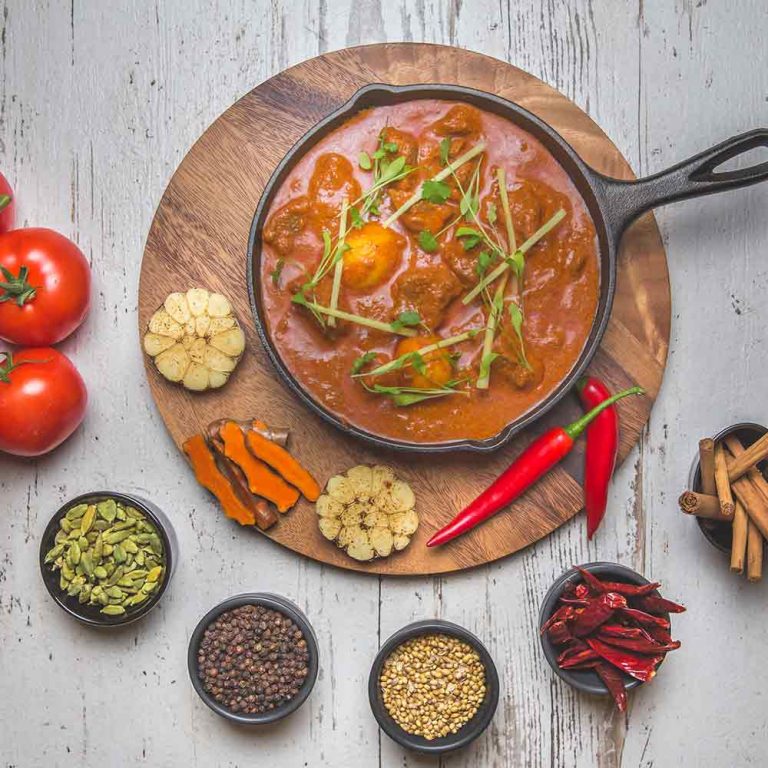The first two words that come to mind when thinking about Indian cuisine aren’t necessarily ‘healthy eating’, but while the cuisine is known for its rich indulgent appeal it doesn’t have to be ghee-enriched, butter sated or deep-fried.
According to Chef Navin Chauhan, head of culinary operations for Asha’s Restaurants in the GCC, Indian food is hugely misunderstood, and he wants to set the record straight.
“In a restaurant setting, the North-West frontier cuisine we prepare is a bit on the heavier side, as the majority of guests are looking for that richer ‘royal’ flavour that comes with a dining experience. But at home, when cooking daily staples, we tend to use a lighter quantity of spices and less oil or fat,” he says.
Eating healthy isn’t only about reducing fat and cutting the calories, but also focuses on maximising nutrients.
Indian cuisine uses a wide array of spices with beneficial properties, such as turmeric, which reportedly has anti-inflammatory and antioxidant benefits, and cooking methods like the tandoor oven eliminate the need to use fat as part of the preparation.
Health and flavour in harmony
The trend towards healthier menu choices is something that Chef Navin is seeing more interest in from Asha’s Restaurants diners, as he explains: “For example, we didn’t use to place too much emphasis on salads or soups in our menus, but we are now exploring different avenues – in response to customer demand – to offer lighter options across the menus in all our restaurants in the region.”
The traditional use of butter, cream and ghee undoubtedly add a layer of richness to Asha’s menu of North-West Indian dishes, but Chef Navin says that it is still possible to remain true to the restaurant’s culinary roots while still imparting maximum flavour.
“I would advise replacing these fats with coconut oil, or olive, sunflower or mustard oil – where appropriate – as well as reducing the amount that you use. Ghee, when used in moderation, is acceptable, but it’s all about control,” he says.
Go for the grill
Chef Navin is a firm advocate of grilling and tandoor preparations as a healthy alternative, as he explains: “Kebabs are a great grilled option and the tandoor can be used universally for grilling different kind of proteins, vegetables and breads. At home, you can use your own grill or barbecue even, and pair your proteins with any kind of greens, be that saag (spinach) or salad, plus a small side of whole-wheat bread.
Bread and rice should also be consumed sparingly. “Grains are a nutritious source of high fibre and whole-wheat flour can be combined with multi-grain flour to make rotis or chapatis which, when cooked without oil on the tawa (flat griddle pan), are delicious,” he says.
Indian desserts, while delicious, are often packed with sugar, and Chef Navin suggests saving that sweet treat for special occasions only.
Eat smart at Asha’s
It’s all too easy to be seduced by Asha’s signature dishes and award-winning menu, but he also puts the responsibility firmly on diner shoulders, and says: “We should all be aware of our maximum recommended daily calorie intake. That means regular meals at specified times and control when it comes to quantity.
“Drink plenty of water, cut down on the sugar and the salt intake, and make sure you include high fibre items as well as exercise to burn calories. And of course, we recommend you enjoy one cheat day a week, so you can indulge in your favourite Asha’s dish or dessert!”
Savvy ordering is the way to go, so next time you dine at Asha’s in Dubai, Abu Dhabi, Bahrain, Kuwait or Qatar, cut back on the naan and rice and opt for lighter protein preparations like grilled prawn or lamb kebabs, tandoori salmon and spicy kadai chicken; or go full flavour vegetarian with dishes such as baingan bharta (charcoal grilled then sautéed eggplant with onion, tomatoes and spices) or a simple high fibre, high protein daal.






